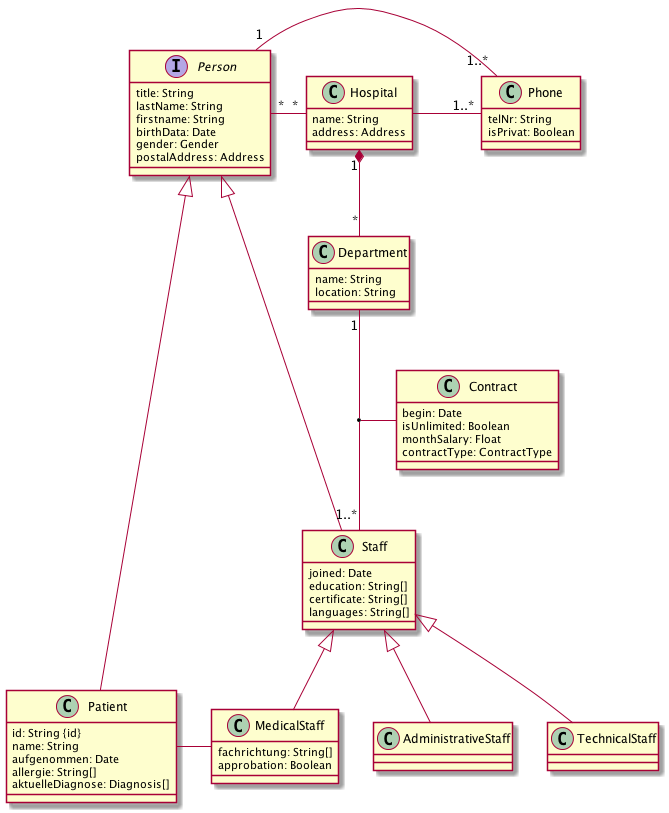Yes - we know that DDD is way more than just a data model - but if you don’t get at least your data right, your system is likely to fail…
In case you don’t create and document a full-blown ‘domain driven design’ model containing both static and dynamic aspects, you should at least create and document a (business- or domain) data model.
Such a data model gives an overview of the fundamental data structures of the system and their relevant relationships.
Take the following as a brief example (based upon an idea from uml-diagrams.org). It lacks definitions or further explanations of the entities and their relations… in reality, you should be more thorough…

PlantUML source
The diagram above was automatically generated from the following PlantUML source:
@startuml
interface Person {
title: String
lastName: String
firstname: String
birthData: Date
gender: Gender
postalAddress: Address
}
Person "1" -left- "1..*" Phone
Person <|-- Patient
Person <|-- Staff
Person "*" --right-- "*" Hospital
class Hospital {
name: String
address: Address
}
class Department {
name: String
location: String
}
Department "*" -down-* "1" Hospital
Department "1" -- "1..*" Staff
(Department, Staff) -- Contract
Hospital --- "1..*" Phone
class Phone {
telNr: String
isPrivat: Boolean
}
class Staff {
joined: Date
education: String[]
certificate: String[]
languages: String[]
}
class Contract{
begin: Date
isUnlimited: Boolean
monthSalary: Float
contractType: ContractType
}
class Patient {
id: String {id}
name: String
aufgenommen: Date
allergie: String[]
aktuelleDiagnose: Diagnosis[]
}
Staff <|-down- MedicalStaff
Staff <|-down- AdministrativeStaff
Staff <|-down- TechnicalStaff
class MedicalStaff{
fachrichtung: String[]
approbation: Boolean
}
MedicalStaff -left- Patient
class AdministrativeStaff {
}
class TechnicalStaff {
}
@enduml
